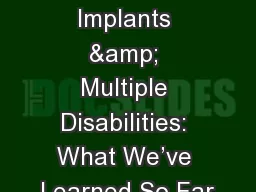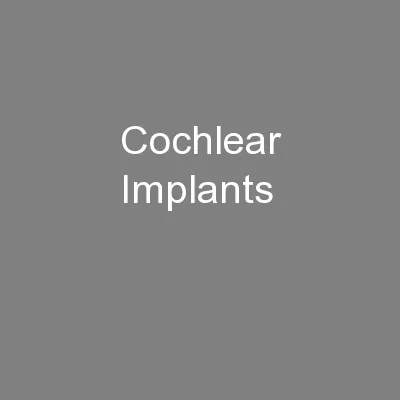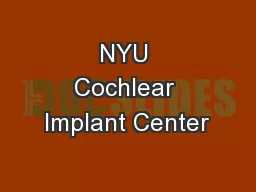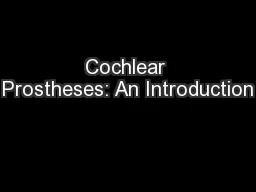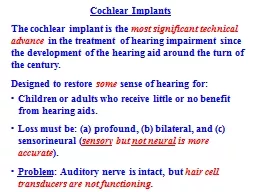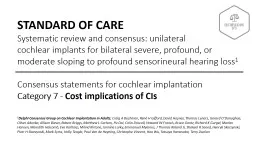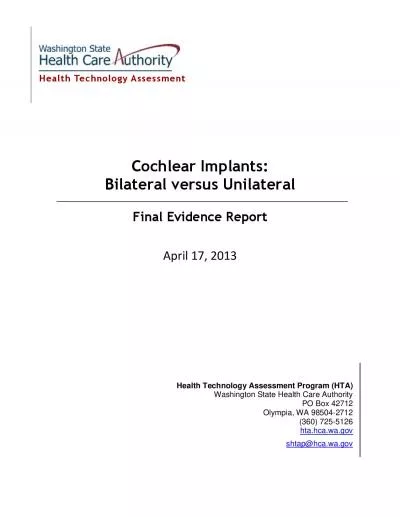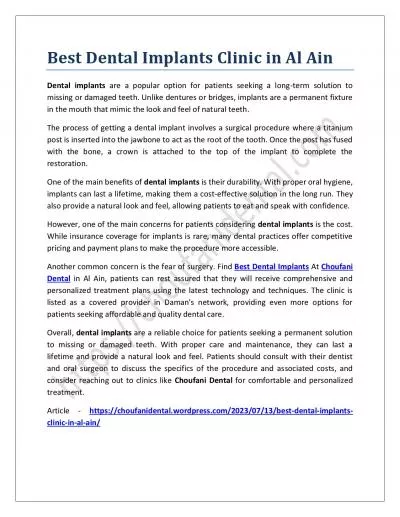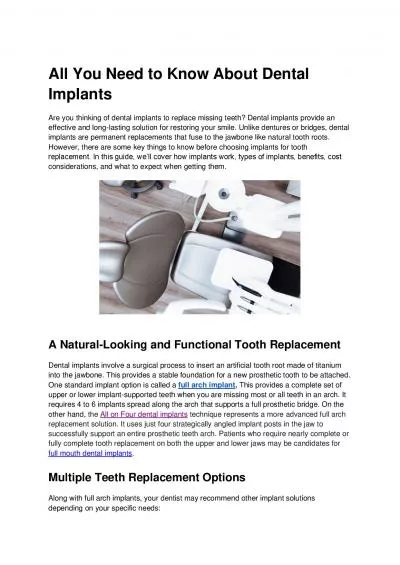PPT-Cochlear Implants & Multiple Disabilities: What We’ve Learned So Far
Author : karlyn-bohler | Published Date : 2019-11-24
Cochlear Implants amp Multiple Disabilities What Weve Learned So Far Ella L Taylor Western Oregon University Susan M Bashinski University of Kansas 2008 Council
Presentation Embed Code
Download Presentation
Download Presentation The PPT/PDF document "Cochlear Implants & Multiple Disabil..." is the property of its rightful owner. Permission is granted to download and print the materials on this website for personal, non-commercial use only, and to display it on your personal computer provided you do not modify the materials and that you retain all copyright notices contained in the materials. By downloading content from our website, you accept the terms of this agreement.
Cochlear Implants & Multiple Disabilities: What We’ve Learned So Far: Transcript
Download Rules Of Document
"Cochlear Implants & Multiple Disabilities: What We’ve Learned So Far"The content belongs to its owner. You may download and print it for personal use, without modification, and keep all copyright notices. By downloading, you agree to these terms.
Related Documents

